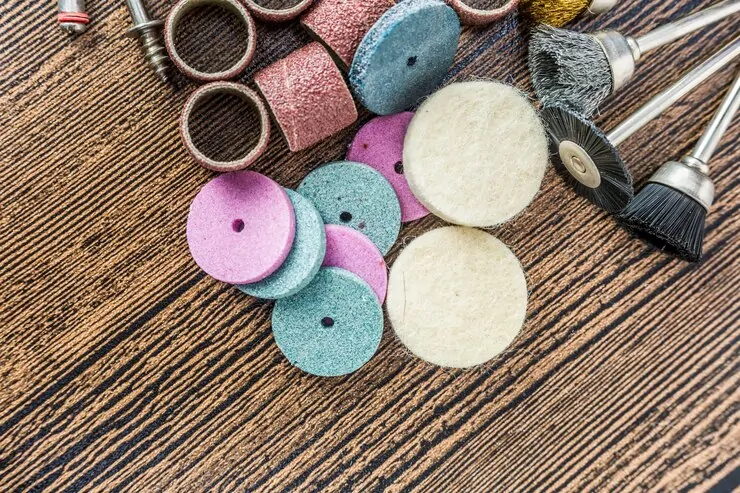What safety precautions should I take when using a finishing wheel?
Learn essential safety precautions when using a finishing wheel, including proper gear, handling techniques, and workspace setup. Protect yourself from hazards and ensure efficient, safe tool operation with these expert tips.

Finishing wheels are essential tools in metalworking and manufacturing, designed to smooth, polish, and refine surfaces. However, improper handling can pose significant safety risks. By following the right precautions, you can ensure both safety and optimal performance during use. Here's a comprehensive guide to the safety precautions you should take when using a finishing wheel.
1. Wear Appropriate Personal Protective Equipment (PPE)
Using a finishing wheel generates sparks, dust, and small debris that can cause injuries. Always wear:
-
Safety goggles or a face shield to protect your eyes and face from flying particles.
-
Hearing protection, such as earplugs or earmuffs, to guard against noise damage.
-
Respiratory masks to prevent inhaling dust, particularly when working on materials that generate fine particles.
-
Heat-resistant gloves to shield your hands from hot materials and sparks.
2. Inspect the Finishing Wheel Before Use
Before using the wheel, inspect it for cracks, chips, or other damages that may compromise its structural integrity. A damaged wheel can break apart during use, leading to severe injuries. Always:
-
Conduct a ring test on bonded wheels to check for hidden cracks.
-
Ensure the wheel is correctly mounted on the tool and secured tightly.
-
Verify that the wheel is appropriate for the material and speed of the tool.
3. Follow Manufacturer’s Guidelines
Adhering to the manufacturer's instructions ensures you use the finishing wheel safely and effectively. This includes:
-
Confirming the wheel's maximum RPM rating matches or exceeds the speed of your tool.
-
Using the proper mounting tools and hardware.
-
Avoiding the use of finishing wheels on incompatible materials.
4. Secure the Workspace
A safe workspace minimizes accidents and injuries. To prepare your environment:
-
Clear the area of flammable materials to avoid fire hazards from sparks.
-
Ensure the workpiece is securely clamped or mounted to prevent movement during operation.
-
Maintain a clean and organized space to reduce the risk of tripping over tools or debris.
5. Operate with Control and Awareness
When using a finishing wheel, maintain full control of the tool and be mindful of your actions.
-
Always start the wheel at a low speed to check for unusual vibrations or wobbling.
-
Hold the tool with both hands for maximum stability.
-
Keep bystanders at a safe distance from the work area.
6. Avoid Excessive Pressure
Applying too much pressure can overheat the wheel or damage the material, increasing the risk of wheel failure. Instead:
-
Allow the wheel to do the work, applying consistent and moderate pressure.
-
Monitor the wheel for signs of wear, such as reduced effectiveness or uneven surfaces.
7. Practice Regular Maintenance
Proper maintenance extends the life of your finishing wheel and ensures safe operation.
-
Clean the wheel after each use to remove dust and debris.
-
Store wheels in a dry, temperature-controlled environment to prevent warping or moisture damage.
-
Replace the wheel promptly if it shows signs of wear or damage.
8. Stay Alert to Warning Signs
While operating the finishing wheel, pay attention to:
-
Unusual noises, vibrations, or sparks that indicate potential issues.
-
Overheating of the tool or wheel.
-
Any signs of discomfort or fatigue, which can impair your ability to handle the tool safely.
Conclusion
Using a finishing wheel requires diligence, proper preparation, and attention to detail. By following these safety precautions, you can reduce the risk of accidents and ensure that your finishing tasks are performed efficiently. Remember, safety is always a priority—never rush or take shortcuts when handling power tools.
What's Your Reaction?
















